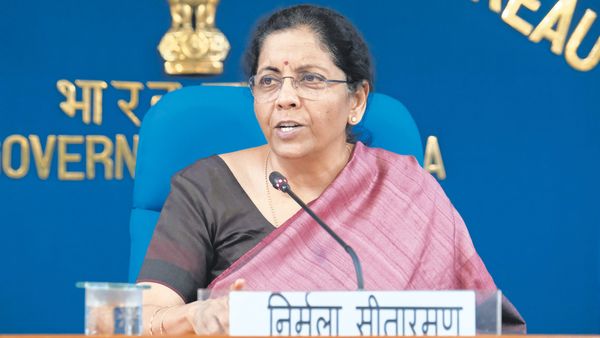
Finance minister Nirmala Sitharaman announced a Rs 1.7 lakh crore relief package involving cash transfers and food security, aimed at ensuring that the most vulnerable sections of society have enough resources to survive the ongoing lockdown and the loss of livelihoods caused by the Covid-19 pandemic. In the next three months, the package will see a payment of around Rs 50,000 crore to around 315 million families (although this could involve some double-counting). It also involves some advance (not new) payments. The number will increase to around Rs 60,000 crore to 365 million families if the increase in wages in the job guarantee scheme is taken into account (although this would involve them finding work for 100 days).
The reason the number of beneficiaries can be counted more than once is because it is theoretically possible for the same family to benefit under more than one scheme. For instance, a farming family where the farmer is enrolled in PM-Kisan (the previously-announced government’s flagship cash transfer scheme for farmers), the woman of the house has a no-frills Jan Dhan bank account, and where there is a registered senior citizen will actually get Rs 4500 over the next three months.
The relief measures announced Thursday also involve another major component — food. Up to 800 million people (roughly 180 million households) will get an additional 15 kg of the staple grain (rice or wheat) and a kg of pulses over the next three months — free. This is welcome. And it is much-needed. It will ensure India’s poorest do not bear the brunt of the pandemic. So far, so good.
The disconcerting thing about the finance minister’s press conference, where the package was announced, was simply that Ms Sitharaman chose to sidestep questions on a similar package for industry, including specific questions on sectors such as tourism and aviation that are hurting badly. While it is only understandable that the government look to the most vulnerable first, some reassurance of forthcoming relief for businesses wouldn’t have hurt. So far, the government has announced relaxation in statutory requirements, which is important but not as critical as a relief and stimulus package. And some of the relaxations stop half-way. For instance, while companies with revenue over ~ 5 crore have been allowed to postpone their March, April and May Goods and Services Tax (GST) payments till the end of June, they will have to pay 9% interest on the delayed payments (down from 18% otherwise).
Many countries have announced generous packages covering individuals, businesses, and states. For instance, the United States has unveiled a $2 trillion package that includes direct payments of $1200 to Americans earning less than $75,000 a year, with an extra $500 per child. The amount will progressively reduce for anyone earning between $75,000 and $99,000. The package also includes a $500 billion stabilisation fund for businesses, $150 billion for state and local administrations, $100 billion for hospitals, $45 billion in disaster relief, $30 billion for education, and $16 billion for critical medical supplies such as ventilators. The United Kingdom has announced a £330 billion lifeline for businesses, institutions and individuals, including tax cuts, new lending facilities for large companies, and a three-month payment holiday for those with mortgages. The US package is around 10% of the country’s GDP; the UK package around 15%. But there’s even more that’s happening. For instance, the US Federal Reserve has announced that it will enter the market to buy corporate bonds, something that would have been unimaginable not so long ago.
Clearly, India needs an aggressive, well-funded relief and stimulus package to help businesses cope with the unprecedented crisis. The government is entirely justified in asking employers to protect jobs, but it needs to follow up with measures that provide relief to companies. The Indian economy was expected to grow at 5% in 2019-20, the lowest in 11 years. The crisis may take that number even lower. The economy was looking like it was coming out of a structural and cyclical slowdown, and that it could grow faster in 2020-21. The pandemic has put paid to such hopes. Businesses, small and large, self-employed professionals, the salaried (and tax-paying) middle-class, all need help.
Prime Minister Narendra Modi moved quickly to contain the spread of the pandemic by announcing a lockdown that will hopefully flatten the curve of infections. Now, the finance minister must move equally quickly (and aggressively) to contain the economic fallout of the crisis. Just like in the case of the highly-virulent infection, a delay could be fatal for the economy.